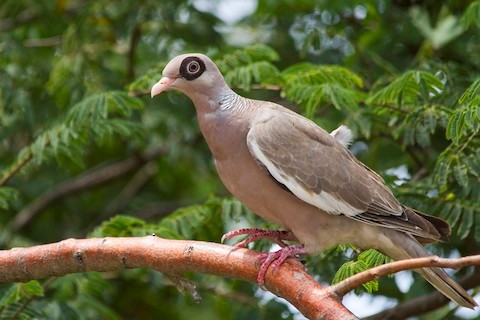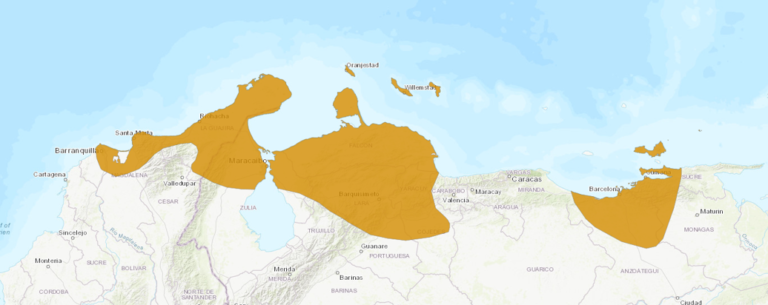Birdfinding.info ⇒ Common in several parts of its limited range, especially on the ABC Islands and Isla Margarita, where it is among the most predominant birds. Hard to miss on any outing on Aruba, Bonaire, and Curaçao. Much more localized on the continent. Areas where it is especially numerous include: in Colombia, Los Flamencos Fauna and Flora Sanctuary and Macuira National Park; and in Venezuela, Médanos de Coro, Morrocoy, and Cerro Saroche National Parks, and Laguna de Unare.
Bare-eyed Pigeon
Patagioenas corensis
Dry lowlands of northern South America and the southern Caribbean, where it inhabits desert scrub, brushland, and deciduous forest. Some populations are acclimated to human development, regularly feeding in agricultural land and urban areas.
In northern Colombia and Venezuela, it occurs near the coast from the Cartagena area east to the Araya Peninsula, and locally farther inland in certain areas: e.g., Valledupar (Colombia), central Lara, and the central Llanos.
Its Caribbean range consists of the ABC Islands and Venezuela’s Isla Margarita, Cubagua, and Coche.
Identification
A pale, sandy-colored pigeon with two conspicuous field marks: an extraordinary bull’s-eye pattern of concentric pale and dark eyerings (reminiscent of aviator goggles), and bold white crescents on its wings that contrast with blackish flight feathers.
The head, neck, and underparts are grayish or suffused with a pinkish blush.
Fine barring on the nape appears grayish at a distance.
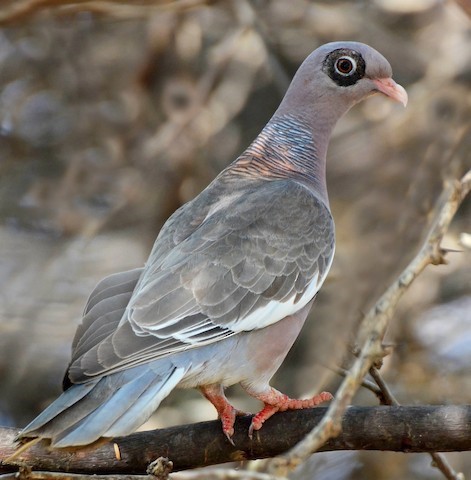
Bare-eyed Pigeon. (Tierra del Sol, Aruba; April 7, 2013.) © Steven Mlodinow
The bull’s-eye goggle consists of a smooth powder-blue inner eyering surrounded by a rough, blackish outer eyering.
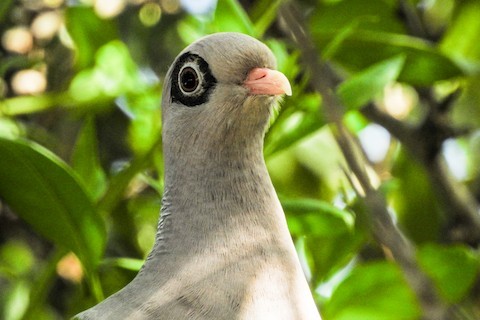
Bare-eyed Pigeon, close-up view of its extraordinary bull’s-eye goggle and pale pinkish bill. (Bubali Bird Sanctuary, Aruba; December 9, 2017.) © Pat Hare
The bill is pale pinkish and the feet are bubblegum-pink.
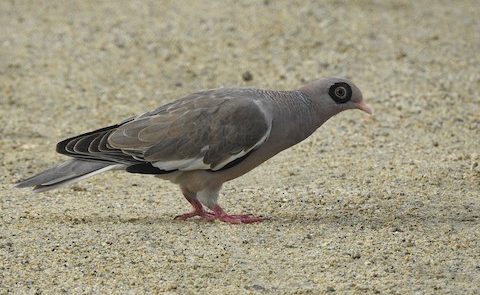
Bare-eyed Pigeon, showing pale pinkish bill, bubblegum-pink feet, and exceptionally bold bull’s-eye goggle. (Bubali Bird Sanctuary, Aruba; October 6, 2018.) © Glenda Tromp
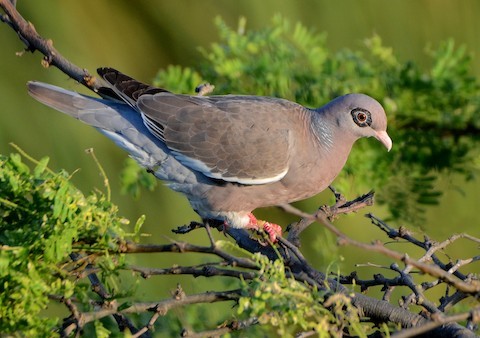
Bare-eyed Pigeon, showing pinkish flush on head, neck, and underparts, and gray on rump. (Bubali Bird Sanctuary, Aruba; February 6, 2014.) © Steven Mlodinow

Bare-eyed Pigeon feeding on cactus buds. (Pozo Colorado, Magdalena, Colombia; March 30, 2019.) © Tomas Wilde
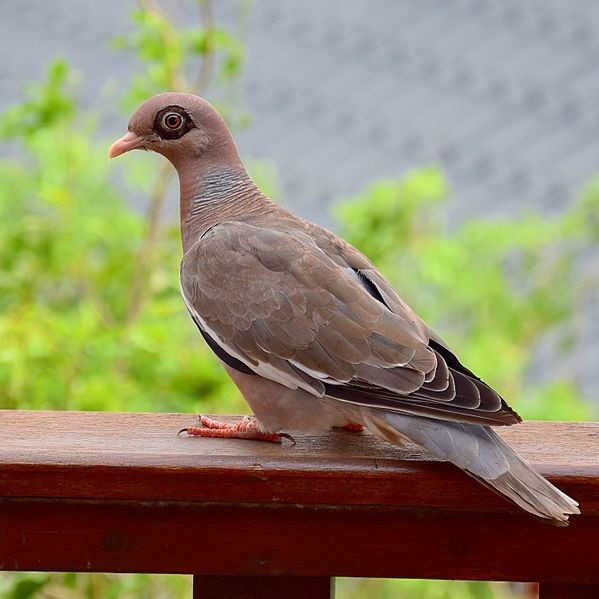
Bare-eyed Pigeon. (Curaçao; October 1, 2016.) © William Kreikes

Bare-eyed Pigeon, showing bull’s-eye goggle and fine barring on the neck. (Willemstad, Curaçao; April 2, 2017.) © Robin Gwen Agarwal

Bare-eyed Pigeon. (Bubali Bird Sanctuary, Aruba; February 6, 2014.) © Steven Mlodinow
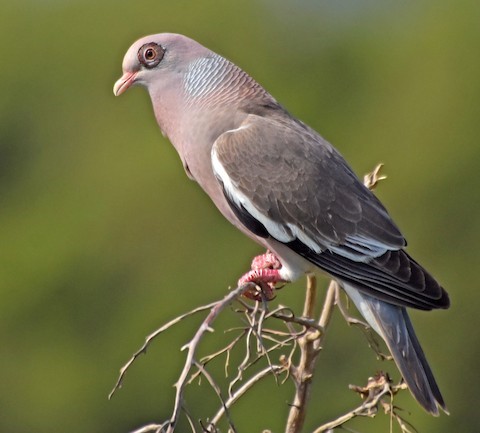
Bare-eyed Pigeon, with neck inflated while vocalizing. (Bubali Bird Sanctuary, Aruba; April 14, 2017.) © Steven Mlodinow

Bare-eyed Pigeon, an urbanized individual. (Palm Beach, Aruba; October 30, 2007.) © Steven Mlodinow

Bare-eyed Pigeon, showing gray back. (Willemstad, Curaçao; November 19, 2018.) © avocat
The back and rump, and sometimes the tail, are pale gray.
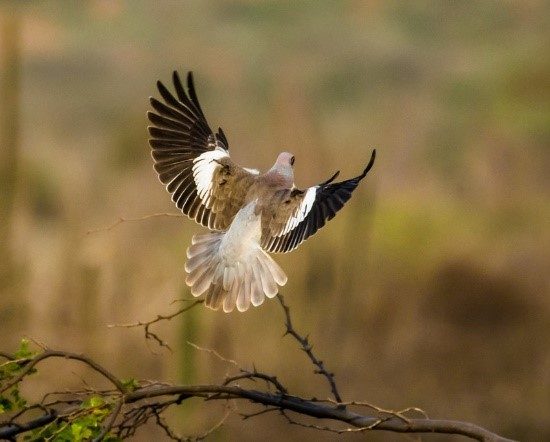
Bare-eyed Pigeon, showing gray back, rump, and tail, and white crescents on wings contrasting with blackish flight feathers. (Santa Catarina, Bonaire; February 3, 2016.) © Jan Willem Steffelaar
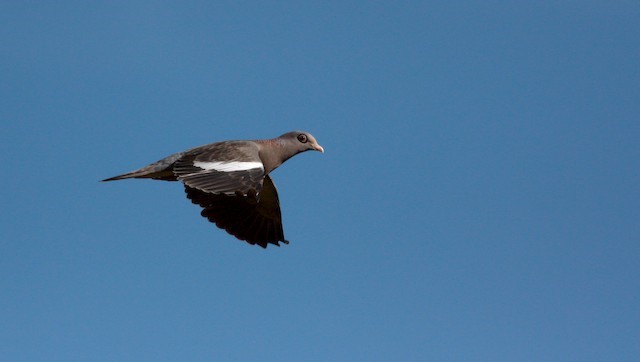
Bare-eyed Pigeon, showing prominent white crescents on wings as they appear at long range. (Hato Masaguaral, Guárico, Venezuela; November 15, 2010.) © Jay McGowan

Bare-eyed Pigeon, showing gray back, rump, and tail, and white crescents on wings contrasting with blackish flight feathers. (Guaruguá, Falcon, Venezuela; May 25, 2014.) © Alberto Porta

Bare-eyed Pigeon, showing prominent white crescents on wings that are visible at long range. (Spaans Lagoon, Aruba; February 2, 2014.) © Steven Mlodinow
The immature lacks the adult’s goggles and could be mistaken for a White-winged Dove.
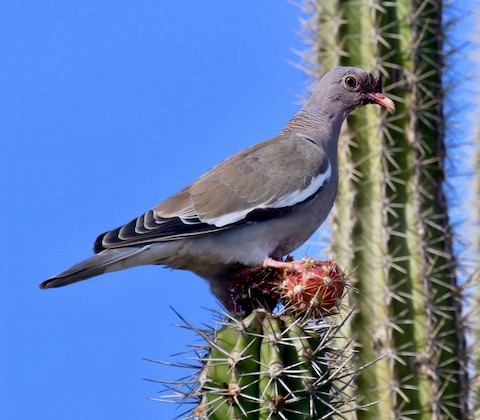
Bare-eyed Pigeon, immature. (Arikok National Park, Aruba; September 22, 2018.) © Peggy Cadigan

Bare-eyed Pigeon, immature. (Kralendijk, Bonaire; April 7, 2017.) © Robin Gwen Agarwal
Cf. White-winged Dove. Immature Bare-eyed Pigeons share the same general plumage pattern with White-winged Dove. The two species are not known to occur together, but White-winged Dove is expanding its range and some future overlap seems likely. They differ in size and shape, as the dove is smaller and leaner overall. The dove can also be distinguished by its contrasting white outer tail feathers visible mainly in flight, its longer, thinner, dark bill, and thin black lines on its face.
Notes
Monotypic species.
References
Ascanio, D., G.A. Rodriguez, and R. Restall. 2017. Birds of Venezuela. Christopher Helm, London.
Baptista, L.F., P.W. Trail, H.M. Horblit, and P. Boesman. 2019. Bare-eyed Pigeon (Patagioenas corensis). In Handbook of the Birds of the World Alive (J. del Hoyo, A. Elliott, J. Sargatal, D.A. Christie, and E. de Juana, eds.). Lynx Edicions, Barcelona. https://www.hbw.com/node/54130. (Accessed September 4, 2019.)
BirdLife International 2016. Patagioenas corensis. The IUCN Red List of Threatened Species 2016: e.T22690247A93267545. http://dx.doi.org/10.2305/IUCN.UK.2016-3.RLTS.T22690247A93267545.en. (Accessed September 4, 2019.)
eBird. 2019. eBird: An online database of bird distribution and abundance. Cornell Lab of Ornithology, Ithaca, N.Y. http://www.ebird.org. (Accessed September 5, 2019.)
Gibbs, D., E. Barnes, and J. Cox. 2001. Pigeons and Doves: A Guide to the Pigeons and Doves of the World. Yale University Press, New Haven, Connecticut.
McMullan, M., and T. Donegan. 2014, Field Guide to the Birds of Colombia (Second Edition). Fundación Proaves de Colombia, Bogotá.
Meyer de Schauensee, R., and W.H. Phelps, Jr. 1978. A Guide to the Birds of Venezuela. Princeton University Press, Princeton, N.J.
Wells, J.V., and A.C. Wells. 2017. Birds of Aruba, Bonaire, and Curaçao. Cornell University Press, Ithaca, N.Y.
